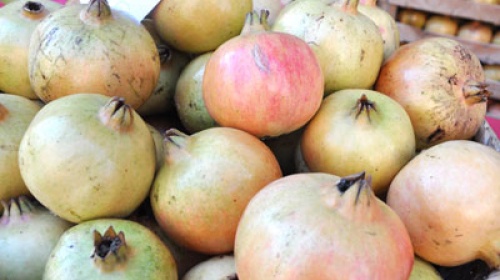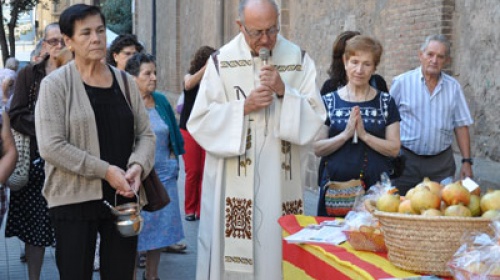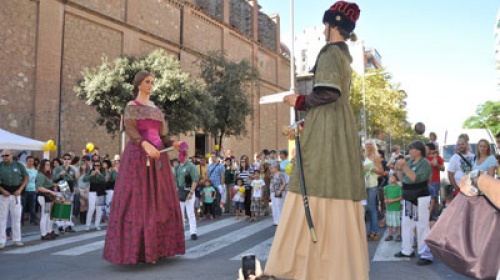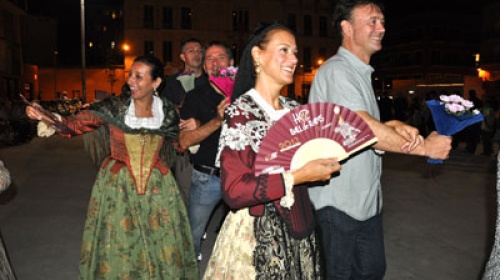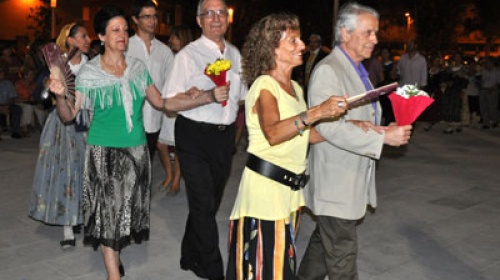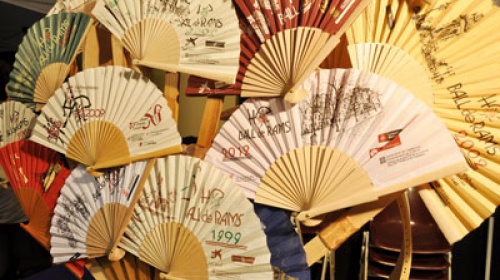Festa major d’Hostafrancs
Activity dates
Dates de celebració
End of September and beginning of October in the Hostafrancs neighbourhood, Sants-Montjuïc district
Feast Day: Sant Àngel Custodi, 1st October
The Hostafrancs neighbourhood was established in the 19th century in the lands separating the gateway to Barcelona through Sant Antoni and the village of Sants. At that time, the Creu Coberta, one of the nerve centres of Hostafrancs, was a strategic point as it was the last stop before entering the city from the west. Industrialisation caused a population explosion in the area, and as in many of the workers quarters, recreational and leisure organisation began to spring up: various circles, cultural centres and casinos.
This rich fabric of associations is demonstrated in the festa major, which takes place at the beginning of October for the feast day of Sant Àngel Custodi. The Federació d’Associacions, Entitats i Comissions d’Hostafrancs collective organises the present-day festa major. The federation has come up with a modern design for the festival, although it still respects tradition, which is summarised by their motto "to maintain, innovate and recover". For example, the traditional fair, the Fira de la Magrana which was the beginning of the festa major, still takes place, there are new devil dances, and ancient dances, like the Ball de Rams (the bouquet dance), once lost, have been recovered.
Reason
For a long time Sant Àngel Custodi was venerated in Barcelona and the oldest relationship with the saint comes from far away from Hostafrancs. Legend tells that in the 15th century an angel appeared to the saint Vicent Ferrer when he entered Barcelona. Just in front of the Orbs door in the city wall, the angel explained to the saint that he guarded the city under orders from on high. From that moment on the gate came to be known as Portal de l’Àngel and a small altar was erected there.
In the 19th century, when the wall was demolished, the statue of Sant Àngel Custodi was moved to Hostafrancs, where a chapel was built in his honour. Worship of the saint followed the him to his new home, along with the veneration and rituals that previously took place in Portal de l’Àngel.
Origins
The move of the figure of Sant Àngel Custodi from the city centre to Hostafrancs brought with it the worship of the saint. This included the custom of getting together near the church on October 1st to eat pomegranates and chestnuts. It seems that this ritual was used by the ancient inhabitants of Barcelona to welcome in the autumn. The fledgling festival was reinforced some years later, in 1879, when the church of Sant Àngel Custodi was granted parish status, separate from Santa Maria de Sants.
Did you know...
Sabies que...
Formerly, the statue of Sant Àngel Custodi was located in Portal de l’Àngel, in one of the most important gateways to the walled Barcelona of the Middle Ages. When lack of space called for its demolition in 1854, the figure was moved to its current home in Hostafrancs. Curiously, in that time the Creu Coberta area housed the new gateway to the city, especially for people arriving from the west. So Sant Àngel Custodi has always welcomed visitors to Barcelona and continues to protect the city under orders from above.
About festivities
Supplementary information
Organisers
Comissió de la Festa Major d’Hostafrancs. Federació d’Associacions, Entitats i Comissions d’Hostafrancs.




